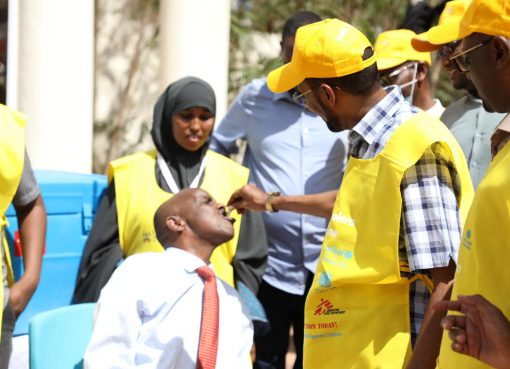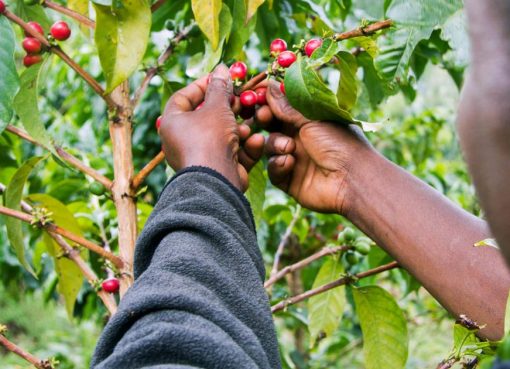The United States Agency for International Development (USAID) sponsored Nawiri project has launched a Community Health System (CHS) Action Research that will guide evidence generation findings in addressing Persistent Acute Malnutrition (PAM) among the communities in Turkana County.
The goal of the USAID five-year project is to sustainably reduce the prevalence of persistent acute malnutrition in four counties in the Arid and Semi-Arid regions of Kenya.
The CHS Action research would inform the implementation of Nawiri project in Turkana County through a joint collaboration between the County Government Turkana and a consortium led by Mercy Corps, RTI international, Save the Children, The Boma Project, The Centre for Humanitarian Change, Caritas Lodwar and the African Population and Health Research Centre (APHRC).
The Community Health System is essential for addressing acute malnutrition because it provides a direct link between community members and support services for early detection and treatment of acute malnutrition.
Speaking during the CHS Action research official launch at the Cradle Camp in Lodwar, the USAID Bureau of Humanitarian Assistance Team Leader, Soledad Rogers noted that high levels of food insecurity, undernutrition, and a high burden of disease, together with high levels of poverty, place the populations at high risk of infection and poor recovery outcomes.
She further said food access, utilization and limited access to health care, water, and hygiene, posed additional risks to the nutrition security of vulnerable populations, all of which contributed to food insecurity and malnutrition.
“USAID Nawiri intends to strengthen the Community Health System (CHS) as the structural and functional space where community health is operationalized, to help protect nutrition gains. We are committed to putting county governments and its citizens in the driver’s seat of their own journeys to self-reliance,” said Rogers.
She commended the long existing partnership between the USAID and the Government of Kenya for over 50 years in support of its development agenda in various sectors, including health.
“We, as USAID, look forward to continuing our long-standing partnership with the county government and Kenya to strengthen the health sector and ensure the well-being of its people. We are committed to continuing to work with you to build stronger communities to withstand the toughest of challenges,” she said.
On his part, the USAID Nawiri project Chief of Party, Darius Radcliffe, said statistics within Turkana indicated that there has been a rise in malnutrition rate for quite some time despite the county experiencing increased investment that has seen better access to water and health services.
“We have done Phase I of the research. We are looking at various key factors that contribute to malnutrition across Turkana. We have investigated a lot of areas to the community level to identify existing gaps and now we are moving forward with concrete action,” said Radcliffe.
The USAID Nawiri Chief of Party, said though the research took the agency two years amid challenges posed by covid-19 pandemic, they required a little bit of time in order to design for various interventions through co-creation in full collaboration with the county government, communities and other various stakeholders.
He said the research was designed for an approximate budget of US $100,000,000 for a period of the next five years.
Turkana County CEC of Health, Jane Ajele, appreciated the USAID Nawiri for their partnership in the concerted efforts to eradicate Acute Malnutrition in Turkana.
The CEC said the County Government alone is not capable of doing away with key community and cultural barriers to acute malnutrition prevention, detection and treatment but it can through partnership with various stakeholders.
Concerning the welfare of the Community Health Volunteers (CHVs) who are the frontline workers for the implementation of CHS in regard to nutrition and other health programming, Ajele noted the challenges faced by the CHVs including incentives, training, supplies and equipment and others. She said the County Government in partnership with other stakeholders is working to address the challenges.
“To pay CHVs we require a budget of Sh88 million and that is a bigger budget for the ministry. We therefore call upon the partners to help us on that,” said Ajele.
She said the County Government has the County Integrated Development Plan (CIDP) 2018, which contains provisions that would guide partners who would wish to enter into partnership with the county government in order to support the Ministry of Health.
The County Executive Committee Member (CECM) for Agriculture and Pastoral Economy who is also the chairperson for Multisectoral Platform, Philip Aemun, assured the residents of Turkana County and the County Government’s commitment in collaboration with other development partners to reduce Acute Malnutrition.
Aemun emphasized on the focus on Agricultural Food Systems Act which would help in reducing the cost of food production to ensure people have consistent access to food.
“How can we ensure reduced cost of food production? How can we produce locally so that food is cheap and affordable and that there is enough in the market?” posed Aemun.
“We need to see how we can have prevention, treatment and interventions packaged together to achieve food security,” he said.
The Acting Deputy Director for Public Health and Sanitation, Dr Innocent Sifuna, said the research had provided evidence that helped the USAID Nawiri and Turkana County Government to identify gaps to address long term Persistent Acute Malnutrition (PAM).
Dr Sifuna said the Community Health System (CHS) would enable the Community Health Volunteers (CHVs) to acquire necessary skills to identify a health problem in a particular village and be able to address or refer some of the patients to the nearest health facility.
“We have 2,393 CHVs in Turkana County each representing a village. They can screen for malnutrition to identify moderate and severe cases and refer them for further management in the nearest health facilities,” said Dr Sifuna.
“We have flagged off Sh36 Million, in addition the Sh24.8 million contributed by USAID Nawiri, a core-funding to support those services in the following year,” he said.
He said the County Government is working to ensure that the CHVs are motivated to enable them work efficiently in providing health services to the communities.
“We are working on ensuring stipends are regularly paid. When they are paid, they would remain vibrant in their work, to identify the cases, refer them and also give them some counselling on some of the products that they are supposed to use,” he said.
By Ekuwam Sylvester




